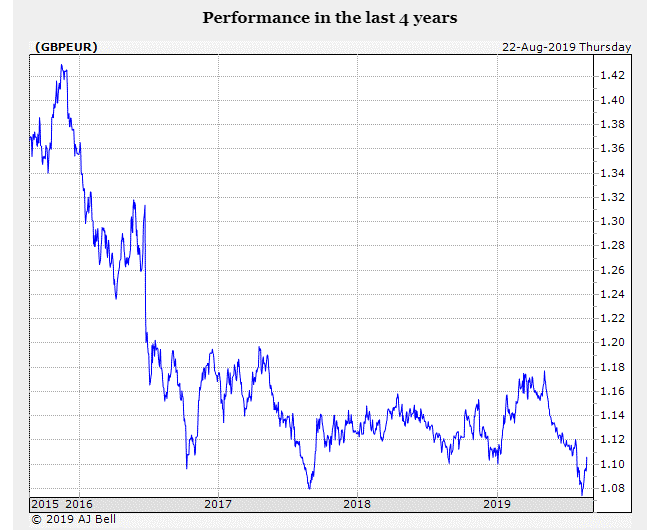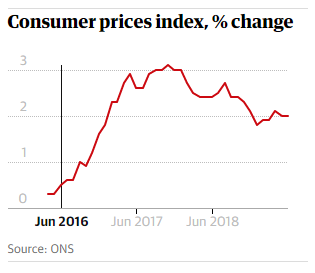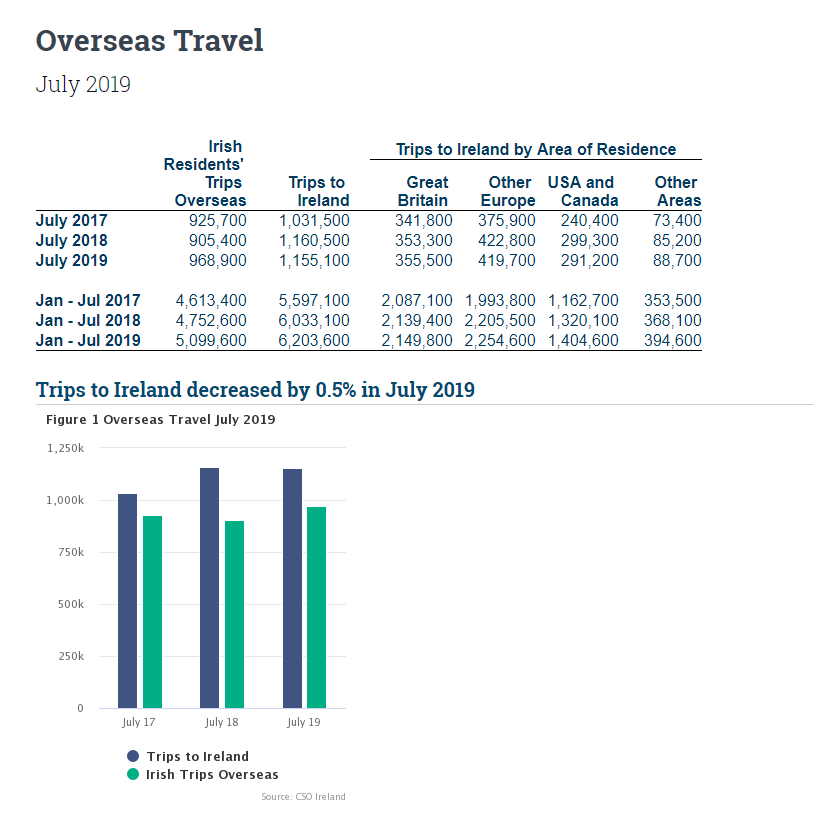On 23rd June 2016, one pound bought €1.30. Today, as of the time of writing, one pound buys €1.11. I sought this chart from https://moneyweek.com/prices-news-charts/gbpeur/. Also, as a quick tip, if you ever want to find an exchange rate super fast, simply enter the two currency codes without spaces into Google directly. For example, if you type “EURGBP”, you will get the euro sterling exchange rate immediately. I use this function all the time!

The question is what impact does this fall in sterling have?
Increase in the price of our exports
As the value of sterling falls, the amount that Irish businesses who are charging in sterling and translating back into euro falls. For example, a company selling £100,000 worth of goods in 2016 would have translated that to €130,000. Today, that same company would only generate €111,000.
Alternatively, if that company was pricing their products or services in euro, the amount that a UK company needs to pay has increased. For example, if an Irish company charged €130,000 for an order in 2016, the UK company would have needed to pay £100,000 for that. However today, that company would need to pay (€130,000/1.11) £117,117 for the same order. This makes Irish exports in the UK less competitive than in the past.
Imported inflation in the UK
Due to the inelastic demand for some goods in the UK, many households have had to pay more for goods that they have to import in from abroad. (Did you know the UK imported $75.1 billion of vehicles in 2018? That’s their second largest import. Can you guess the first?). Since the value of the sterling fell, all else equal, the price of paying for goods from abroad has increased. This imported inflation is an example of “cost push inflation”.
*http://www.worldstopexports.com/united-kingdoms-top-10-imports/

Original source – The Guardian
Tourism figures from the UK
Since the price of euros has increased, it has become more expensive for tourists in the UK to visit Ireland, all else equal. As a result, the number of tourists visiting Ireland has decreased. In the second quarter of 2016, 1,013,600 people travelled from the UK to Ireland and in the same period three years later, that has fallen to 985,200 people. This has an impact on our hospitality sector, employment in the industry and taxes collected on the money that tourists from the UK spend. In response, the government has tasked Tourism Ireland with encouraging increased tourism from other parts of the world.

Source: CSO
Click here to view the full release.

